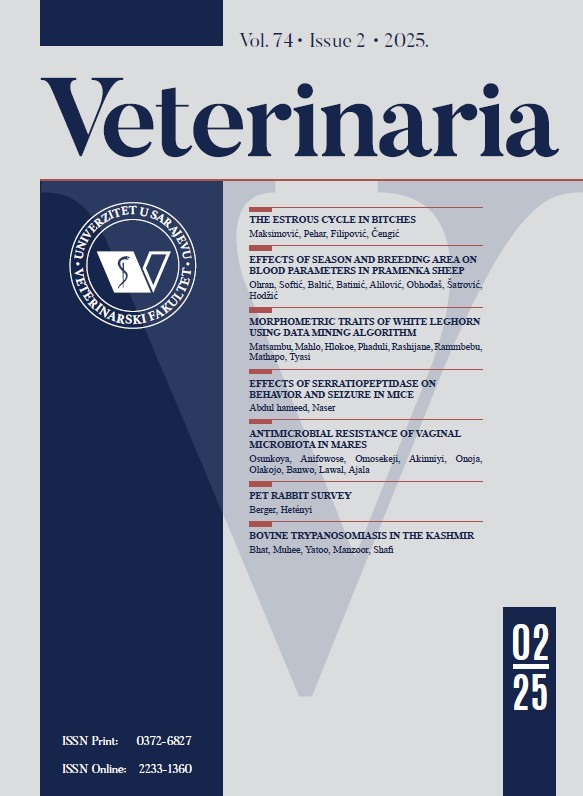Seroprevalence and associated risk factors of Rift Valley fever and Crimean Congo hemorrhagic fever viruses in livestock and their zoonotic potentials: A systematic review
DOI:
https://doi.org/10.51607/22331360.2022.71.1.1Keywords:
CCHF, RVF, risk factors, seroprevalence, zoonoseAbstract
A systematic review was carried out to identify scientific articles documenting on seroprevalence of Rift valley fever and Crimean Congo hemorrhagic fever infections of Livestock and human known to date to cause disease with associated risk in articles published from 2011 to 2021. Preferred Reporting Items for Systematic Reviews and Meta-Analyses Statement (PRISMA) 2020 expanded checklist was used to summarize the article selection process. Search strategy was developed to retrieve eligible studies from PubMed (Medline)/OVOID, Animal Health and Production Compendium (CABI) and SciQuest (NZVA). The preliminary search retrieved 2,213 articles on the specified areas: 1,515 articles on Rift Valley Fever Virus, 698 articles on Crimean-Congo Haemorrhagic Fever Virus. Finally a total of 106, (64 on RVFV and 42 on CCHFV) openly available articles were retained for the review process from 30 and 23 different countries respectively. The articles were clustered in to three: articles on livestock sera, articles on human sera and articles from both human and different livestock (Cattle, Sheep, Goat and Camel) serum. The systematic review showed that pooled seroprevalence of RVFV (13.16%) and CCHFV (9.6%). The descriptive statistical analysis revealed statistical difference in the seroprevalence of Rift valley fever in sheep, Goat and camel (χ2 =771.857840, 787.903297, 358.448980; p-value=0.002971*, 0.008652*, 0.000000**) respectively in different countries. This systematic review reflects circulation of RVF and CCKF with complex ecology of vector-borne diseases and the establishment of sustained transmission and the emergence of human and/or animal disease influenced by multiple factors. Therefore, the review indicated that there should be an urgent need for both cost-effective and efficient surveillance systems that focus sampling in the right place at the right time.
Downloads
Published
How to Cite
Issue
Section
License
Copyright (c) 2022 Alemu Jemberu Megenas, Legesse Mengistu, Mamo Gezahegne

This work is licensed under a Creative Commons Attribution 4.0 International License.








